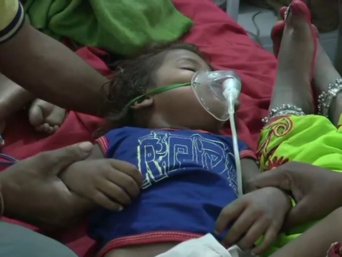- About
- Topics
- Picks
- Audio
- Story
- In-Depth
- Opinion
- News
- Donate
- Signup for our newsletterOur Editors' Best Picks.Send
Read, Debate: Engage.
| located: | India, Vietnam |
|---|---|
| editor: | Tish Sanghera |
This week TV audiences across India have been flooded with distressing images: young children lying on hospital beds, fighting for their lives.
Many of these children are from modest families who had migrated to Muzzafarpur, a city in Bihar, one of India’s poorest states in search of work. It was their hungry stomachs that sent them foraging in orchards bearing litchi fruit – an activity that ultimately cost them their lives. Doctors currently believe that Japanese Encephalitis, a virus also known as ‘brain fever’ may have contaminated the fruit, causing high fever, vomiting and convulsions – symptoms which can be life-threatening for already malnourished children.
Around 173 children have died so far. Prime Minister Modi described the deaths as a “matter of shame” and something that “we need to take seriously”. He is right of course, but with similar events taking place in 2012 and 2014, public anger abounds as many ask how these deaths could have occurred again?
It appears health workers did not make the necessary home visits warning migrant families of the risk, while local healthcare centres were severely under-funded and unable to follow growth-monitoring duties. The Chief Minister has also been accused of not prioritising the outbreak, only visiting affected families after two weeks and being more interested in the cricket score during a press conference on the issue.
The encephalitis outbreak has revealed a shameful fact: that still, the poor are far down the list of government priorities. Lessons were not learnt because the people affected are not important enough for those at the top.
Ultimately it was malnutrition that caused the outbreak, a debilitating, but of course preventative, syndrome that can stunt growth and brain development. Encephalitis will never hurt children from better off families because their bellies will never be empty.
As the annual budget meeting approaches, the government needs to allocate more funding to existing schemes that can reduce the prevalence of malnutrition in India, which currently affects 40 percent of children.
Instead of cutting funds to the national Anganwadi network for example – or child healthcare centres that provide meals, nutrition services and immunisation – the government should be pouring money into early childhood development programmes.
India is currently poised to have the largest working-age population by 2027 – a potential productivity boom that could aid faster development. But if the health of the entire population is not prioritised, this will be a missed opportunity.
Other developing countries, notably Vietnam and Bangladesh have made strong progress on this front and provide a blueprint for India. It’s therefore finally time for policymakers to see health as an investment in its people, and not something to be ignored.
Image: Image Credit: Social media
